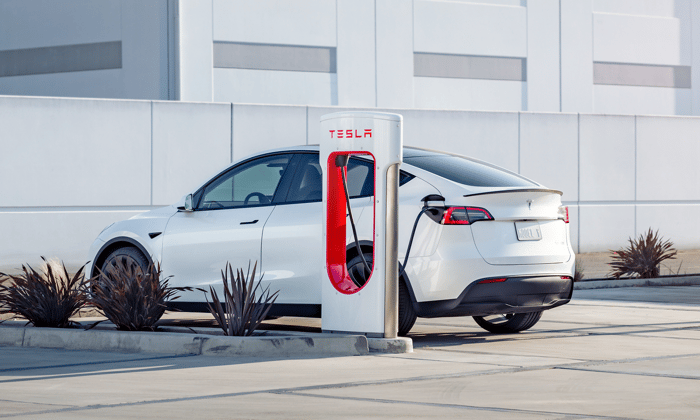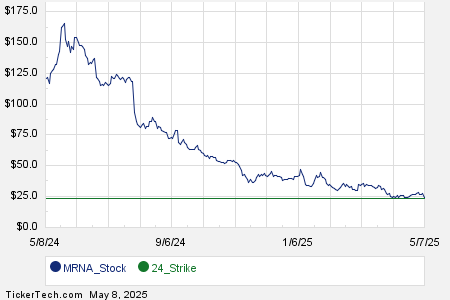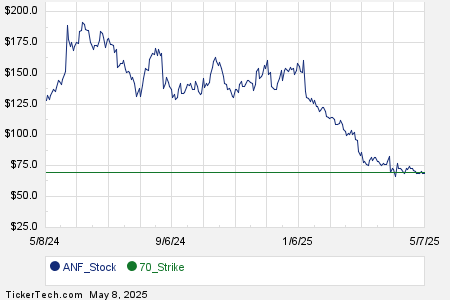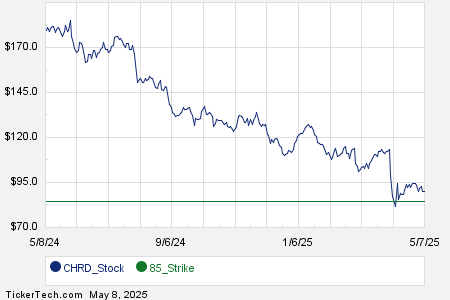Tesla’s Stock Soars and Then Falls: What’s Next for Investors?
Shares of Tesla (NASDAQ: TSLA) reached a record high of $479 at the end of 2024, shortly after President Trump won the election. Investors felt optimistic about potential regulatory reforms that could expedite Tesla’s advancements in autonomous driving and robotics. Analysts and CEO Elon Musk anticipate that these developments could dramatically increase the company’s valuation.
However, the stock has since dropped 53% from its peak. Currently, 79% of Tesla’s revenue comes from passenger electric vehicles (EVs), and early 2025 reports suggest demand may be declining significantly.
Where to invest $1,000 right now? Our analyst team just revealed what they believe are the 10 best stocks to buy right now. Learn More »
Management typically shares production and delivery figures for the first quarter (ending March 31) on April 2. Given the stock’s 50% drop over the recent months, some may wonder if this presents a buying opportunity ahead of the report on deliveries. Let’s explore further.
Tesla’s Sales Decline Signals Trouble
Tesla delivered 1.78 million cars in 2024, marking a 1% decrease from 2023. This downturn represents the first annual sales drop since the launch of the Model S in 2011, significantly affecting Musk’s ambition to increase production by 50% annually.
Worrisomely, sales trends for 2025 appear even more troubling, with a staggering 43% decline observed in Europe during January and February compared to the same months the previous year. This includes a dramatic 70% drop in Germany, 48% in Denmark, and 45% in Sweden and Portugal. In Australia, sales fell by 33% in January, worsening to a 70% decrease by February.
Potential declines in China during the first quarter of 2025 loom large. Given that China plays a crucial role in Tesla’s sales, accounting for approximately a third of its total revenue, any drop in this market raises alarms.
The decline in demand stems from various factors. Although global sales of EVs are on the rise, Tesla appears to be losing market share to competitors swiftly.
Brands such as BYD and Great Wall Motors now offer their base model EVs for less than $15,000 in China, and they are rapidly expanding into international markets. This pricing strategy leaves Tesla struggling to compete in the markets where it operates.
Additionally, Musk’s intertwining of personal and political views may be complicating the brand’s image. Recent reports from the Associated Press highlight increased vandalism targeting Tesla dealerships and vehicles not only in the U.S. but also globally.
Regardless of personal opinions on Musk’s political stance, these incidents influence consumer perceptions, leading many to reconsider their EV purchases from Tesla.

Image source: Tesla.
Future Prospects: Autonomous Vehicles and Robotics
Rather than manufacturing low-cost EVs to compete with Chinese brands, Musk is shifting Tesla’s focus to autonomous driving and robotics. In October, Tesla introduced its Cybercab robotaxi, which will exclusively utilize its full self-driving (FSD) technology. Designed for constant passenger transport and commercial delivery, this could unlock new revenue potential for the company.
While supervised FSD has been in beta testing within Tesla’s passenger EVs, Musk believes unsupervised versions will soon earn approval for public use in Texas and California.
Cathie Wood’s ARK Investment Management suggests that FSD and the Cybercab could boost Tesla’s valuation to $8 trillion by 2029, capitalizing on opportunities in new sectors like autonomous ride-hailing. Currently, Tesla is valued at approximately $700 billion, which implies more than an 11-fold growth based on ARK’s forecast.
However, some forecasts by ARK may be overly optimistic. For instance, the firm anticipates FSD and the Cybercab to generate $756 billion in annual revenue by 2029. Given Tesla’s total revenue of $97.6 billion last year, it’s unreasonable to expect such swift scaling for two new products that have yet to launch, particularly when consumer response remains uncertain.
Musk believes the Optimus humanoid robot may represent an even larger financial opportunity than autonomous vehicles. He envisions a future where humanoids outnumber humans by 2040, enabling their presence in homes and factories to assist with labor-intensive tasks. Musk stated in a recent call with investors that Optimus could yield $10 trillion in revenue over time.
He even sees this robot as paving the way for Tesla to potentially become the most valuable company in the world.
Investing in Tesla Stock Ahead of April 2
Before making decisions to buy Tesla stock based on forecasts from ARK and Musk, investors should evaluate its valuation critically. Despite Tesla’s price cuts on most of its EVs last year aimed at boosting demand, the company still faced a sales decline, with its earnings per share (EPS) dropping 53% compared to 2023, to $2.04.
This figure results in a striking price-to-earnings (P/E) ratio of 110.4, making Tesla the most expensive stock among the “Magnificent Seven” tech giants by a significant margin:

TSLA PE Ratio data by YCharts.
Though the Cybercab may not enter mass production until 2026, and Optimus could take even longer to scale, Tesla’s financial outlook will hinge on its passenger EV sales for the next year. Given the earlier sales declines, the company’s EPS might decline further in 2025, rendering the stock even more costly based on future earnings.
In summary, Tesla faces significant challenges that will likely take longer than one quarter to resolve, and its current valuation affords little room for missteps. Therefore, the upcoming first-quarter production and delivery report on April 2 may not act as a positive catalyst for its stock.
Tesla’s Growth Uncertainty and Lucrative Investment Opportunities
Given Tesla’s current trajectory, I would advise caution. If the company does not achieve growth this year, its Stock may experience a further decline of 50% or more.
Seize This Second Chance for a Potentially Profitable Investment
Have you ever felt that you missed out on investing in successful stocks? If so, pay attention.
Our expert analysts occasionally issue a “Double Down” Stock recommendation for firms they believe are poised to make significant gains. If you’re worried about missing your opportunity, now may be the optimal time to invest before it’s too late. The investment figures support this assertion:
- Nvidia: A $1,000 investment when we doubled down in 2009 would now be worth $304,759!*
- Apple: Investing $1,000 during our 2008 recommendation would yield $40,808!*
- Netflix: If you invested $1,000 in 2004 when we doubled down, you’d have $517,445!*
Presently, we are issuing “Double Down” alerts for three outstanding companies, and another opportunity like this may not come soon.
Continue »
*Stock Advisor returns as of March 18, 2025
Suzanne Frey, an executive at Alphabet, serves on The Motley Fool’s board of directors. Randi Zuckerberg, a former director of market development for Facebook and sibling of Meta Platforms CEO Mark Zuckerberg, is also a member of The Motley Fool’s board. John Mackey, former CEO of Whole Foods Market, which is now a subsidiary of Amazon, contributes to The Motley Fool’s board. Anthony Di Pizio currently holds no positions in any of the companies discussed. The Motley Fool has ownership interests in and recommends Alphabet, Amazon, Apple, Meta Platforms, Microsoft, Nvidia, and Tesla. Additionally, The Motley Fool recommends BYD Company and holds the following options: long January 2026 $395 calls on Microsoft and short January 2026 $405 calls on Microsoft. The Motley Fool adheres to a comprehensive disclosure policy.
The views expressed in this article reflect the author’s opinions and do not necessarily represent those of Nasdaq, Inc.




